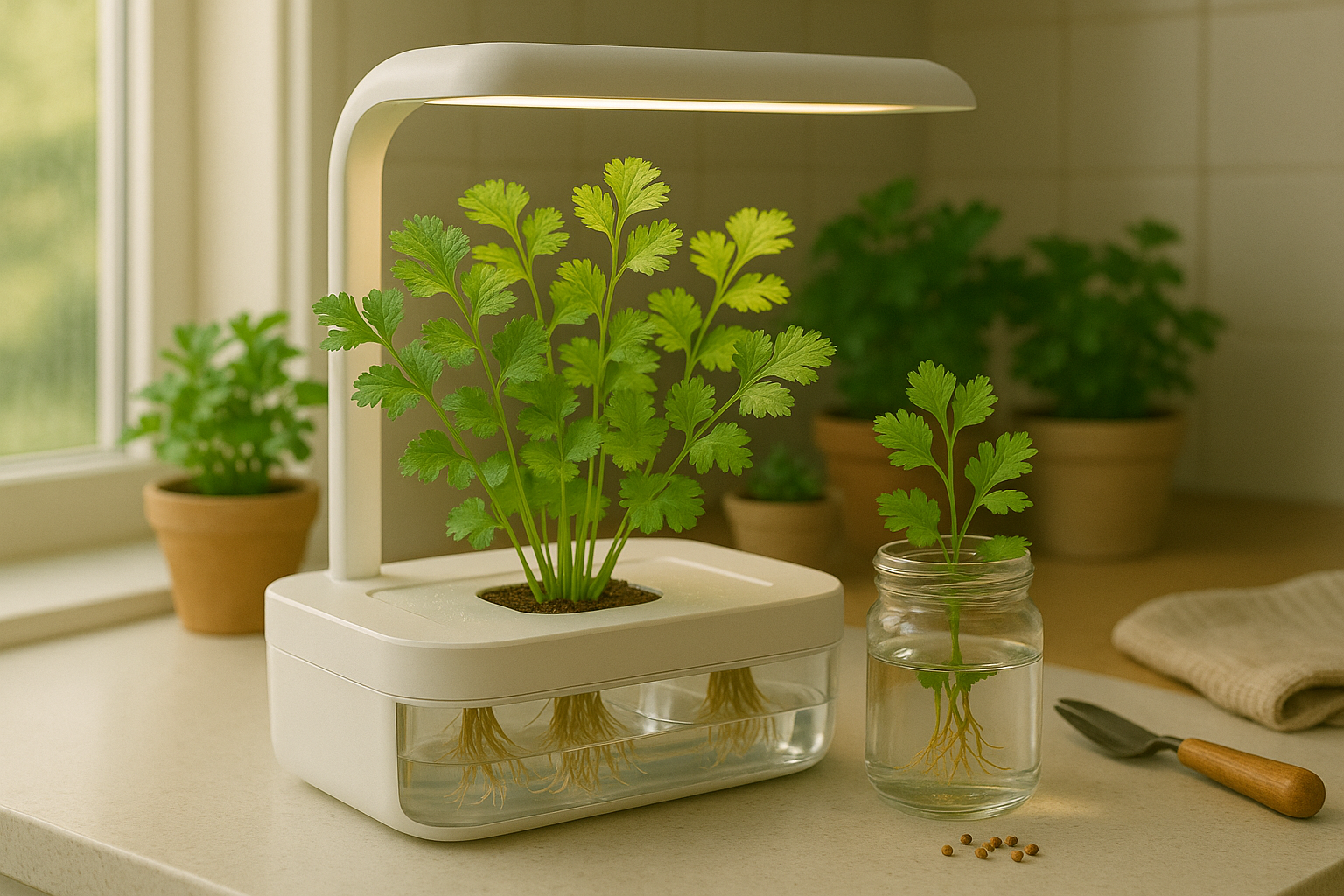Introduction to Hydroponic Cilantro
Hydroponic cilantro is quickly becoming a favorite among home gardeners and commercial growers who want a fresh, sustainable way to grow this popular herb. If you’ve ever wondered, “Can you grow cilantro hydroponically?”—the answer is a definite yes. Hydroponic growing skips traditional soil altogether and uses nutrient-rich water solutions to deliver everything cilantro needs directly to its roots.
This method not only allows you to grow cilantro in places with limited garden space or poor soil but also lets you enjoy a steady harvest year-round. Say goodbye to waiting for the right season or dealing with common soil pests and diseases. With hydroponic cilantro, your kitchen can have a constant supply of fresh, aromatic leaves even in the middle of winter or in urban apartments.
Plus, hydroponics helps you save water, optimize plant growth, and reduce mess—no more spilling bags of potting soil in your kitchen! Whether you dream of endless homemade salsa or just want the freshest garnish for your dishes, hydroponic cilantro is a reliable, efficient, and eco-friendly way to ensure you never run out of this essential herb.
Benefits of Growing Cilantro Hydroponically
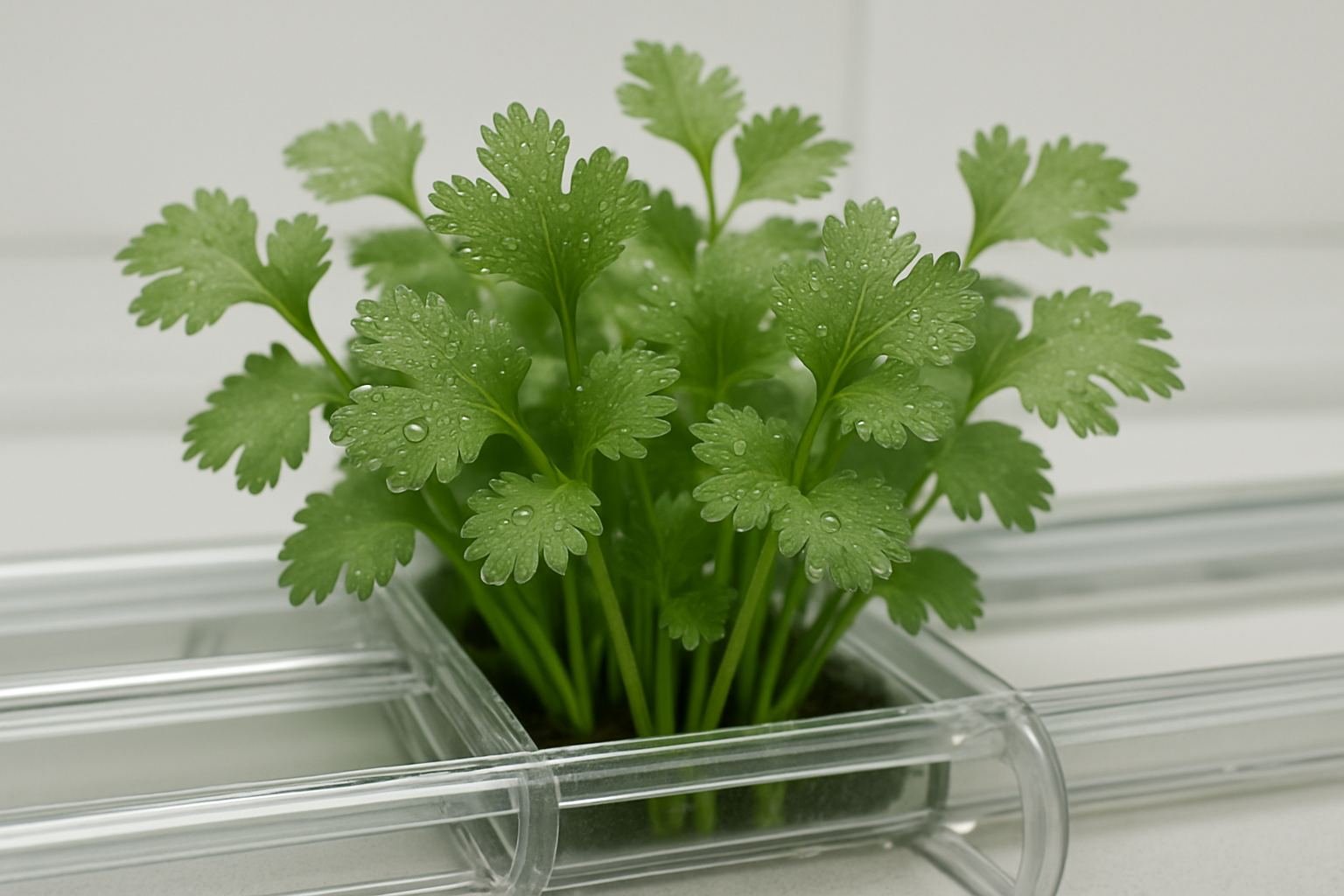
Growing cilantro hydroponically offers a range of practical advantages, making it an appealing choice for both home gardeners and commercial growers. One of the standout benefits is the faster growth rate—cilantro grown in water-based systems often matures in just a few weeks, compared to longer cycles in soil. This rapid turnaround means you can enjoy more frequent harvests and a continuous supply of fresh leaves.
Hydroponics also significantly reduces the risk of common soil-borne pests and diseases, so you’ll spend less time tackling issues like root rot, aphids, or leaf spot. For cilantro specifically, hydroponic setups provide greater control over temperature and nutrients, helping to reduce the risk of premature bolting—a common problem that causes cilantro to flower and turn bitter quickly in traditional gardens.
The leaves stay cleaner since there’s no soil splash, making post-harvest washing easier and cutting down on prep time in the kitchen.
From a sustainability perspective, hydroponic systems use significantly less water than traditional gardening, as the recycled nutrient water delivers just what the plant needs with minimal waste. Plus, these systems can be run indoors or in urban environments with limited space, increasing efficiency for anyone looking to grow fresh herbs at home.
Altogether, hydroponic cilantro offers quicker harvests, fewer maintenance hassles, and a smaller environmental footprint—making it a smart, modern alternative to soil gardening.
Getting Started
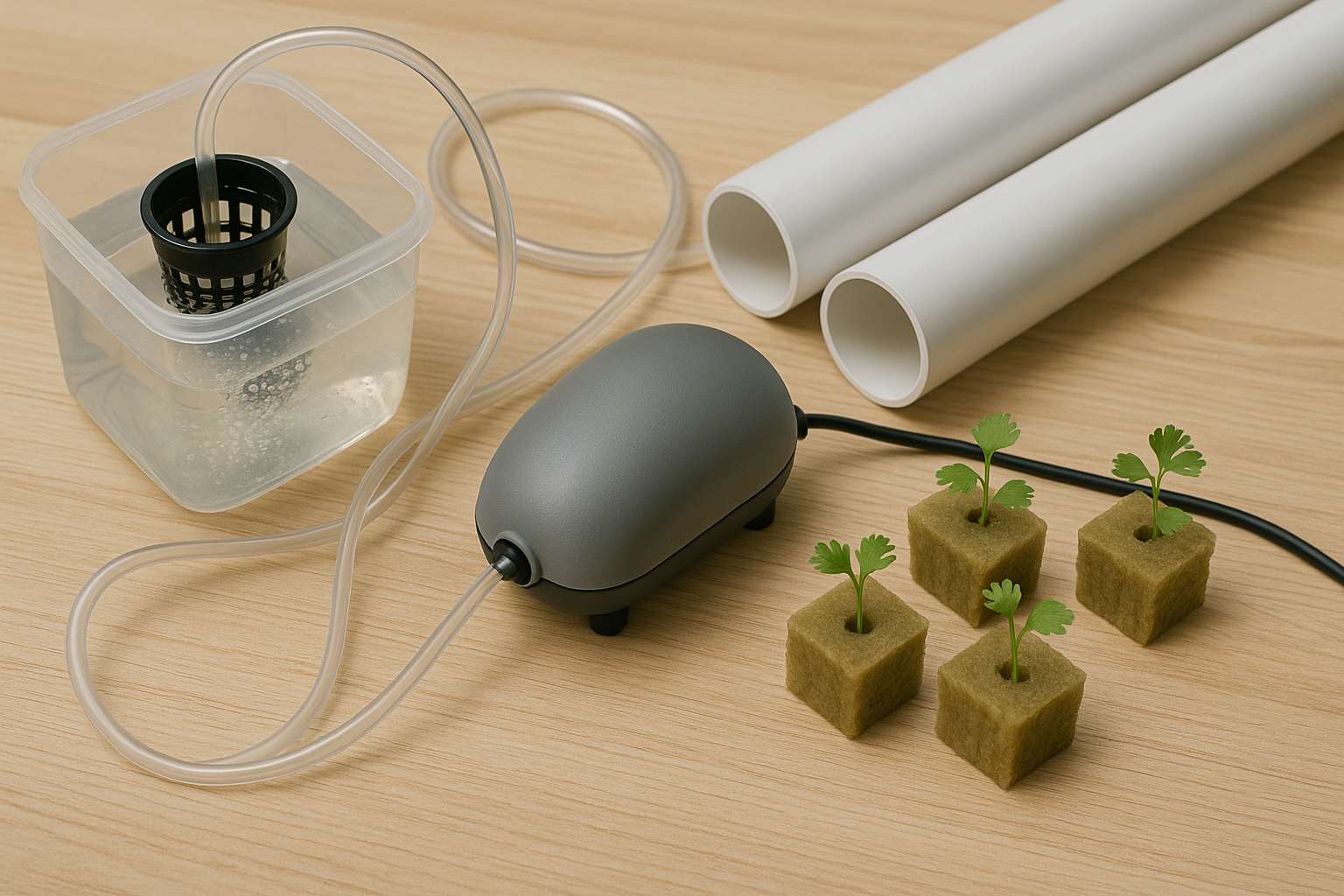
Selecting the right hydroponic system for growing cilantro at home is easier than you might think. A few common options stand out for hobbyists.
The Kratky method is a passive, low-tech choice that requires just a container, water, and nutrients—ideal for beginners or anyone tight on space. Simply suspend your cilantro seeds above a nutrient solution without pumps or electricity, and let the roots grow down as they seek water.
For those who want something a bit more advanced, the Nutrient Film Technique (NFT) is a popular system where a thin film of water continuously flows over the roots, providing steady nutrients and oxygen. NFT setups can be assembled on a small shelf using PVC pipes and a small pump, making it great for compact spaces like apartments.
Deep Water Culture (DWC) is another favorite, with plant roots suspended in an oxygen-rich nutrient solution thanks to an aquarium air pump. DWC systems can be built with basic buckets or tubs, scaling up or down depending on your available area.
All three methods work well because cilantro’s shallow roots don’t need much depth, but they do appreciate stable moisture and good oxygenation.
When setting up at home, consider starting small with one or two containers on a sunny windowsill, balcony, or under inexpensive LED grow lights. Make sure your system provides at least six hours of light daily, and position your plants so airflow isn’t blocked, as stagnant air can encourage fungal issues.
With a little planning, you’ll be harvesting fresh cilantro in just a few weeks.
Step-by-Step Guide
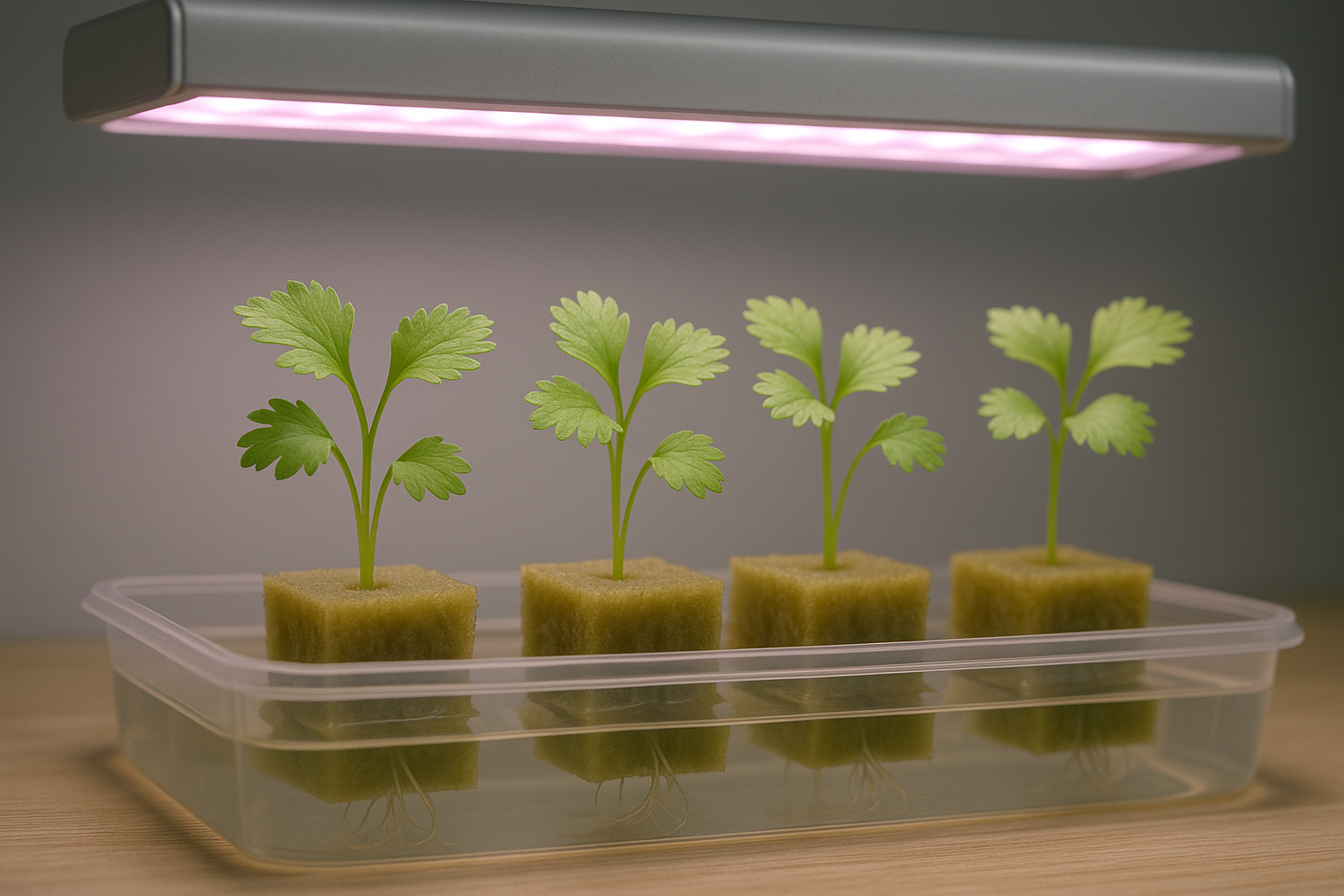
Starting your hydroponic cilantro journey begins with choosing high-quality seeds, preferably slow-bolt or hydroponic-friendly varieties, as these resist premature flowering and thrive in a soilless environment. Begin by germinating your seeds: place them between damp paper towels inside a plastic bag, then keep them in a warm, dark spot for 7-10 days until you see small sprouts. For improved germination, you can gently crush the seed husks before soaking to help kickstart the process.
Once germinated, transfer the seedlings into your chosen hydroponic medium, such as rockwool cubes, coco coir, or clay pellets, ensuring each seedling sits about 2-3 inches apart. This spacing allows ample room for root development and helps maintain airflow, preventing mold and disease—crucial in moisture-rich hydroponic setups.
After planting, position your seedlings under full-spectrum LED grow lights for 12-16 hours daily, keeping the light source about 8-12 inches above the foliage to mimic ideal growing conditions and prevent leggy shoots. Cilantro prefers temperatures between 65-75°F; avoid letting it rise above 75°F to prevent bolting.
Regularly monitor the nutrient solution: aim for a pH of 6.0-6.5 and an electrical conductivity (EC) around 1.2-1.8 for optimal growth. Use a balanced hydroponic nutrient mix with a higher nitrogen ratio during early growth, then switch to a bloom mix with more potassium as the plants mature. Keep water consistently oxygenated and change the solution every two weeks to avoid nutrient imbalances or pathogen build-up.
To keep cilantro healthy, provide adequate airflow with a gentle fan and check daily for signs of pests or yellowing leaves, adjusting lighting, pH, and nutrients as needed. With these steps, you can enjoy multiple harvests of crisp, aromatic cilantro year-round—all without soil or guesswork.
Daily Care and Maintenance for Healthy Plants
Keeping your plants healthy starts with daily observation. This can be as simple as checking leaves for discoloration, droopiness, or spots—early signs of nutrient deficiencies, pests, or diseases. Use a moisture meter or your finger to gauge soil dampness before watering; overwatering is a major cause of root rot, especially if drainage is poor.
Adjust nutrients based on plant growth: vigorous plants may need a diluted fertilizer every few weeks, while slower growers might thrive on less. Lighting is crucial—most houseplants do best with bright, indirect sunlight. Rotate pots every few days to ensure even exposure and prevent plants from stretching toward the window.
For homes with variable humidity, misting the leaves or placing plants on pebble trays filled with water can help, especially in winter when indoor air gets dry. Aim for 40-60% humidity for most tropical species.
Watch for slow growth, as it often signals issues. Consider repotting root-bound plants, cutting back on overwatering, or checking for pests under leaves. If you spot signs of root rot—like mushy roots or a foul smell—remove the plant from its pot, trim affected roots, and repot in fresh, well-draining soil.
Remember, each plant species can have unique preferences, so a little research goes a long way. Daily, attentive care paired with quick responses to problems leads to thriving, resilient plants that brighten your space year-round.
Harvesting and Using Your Hydroponic Cilantro
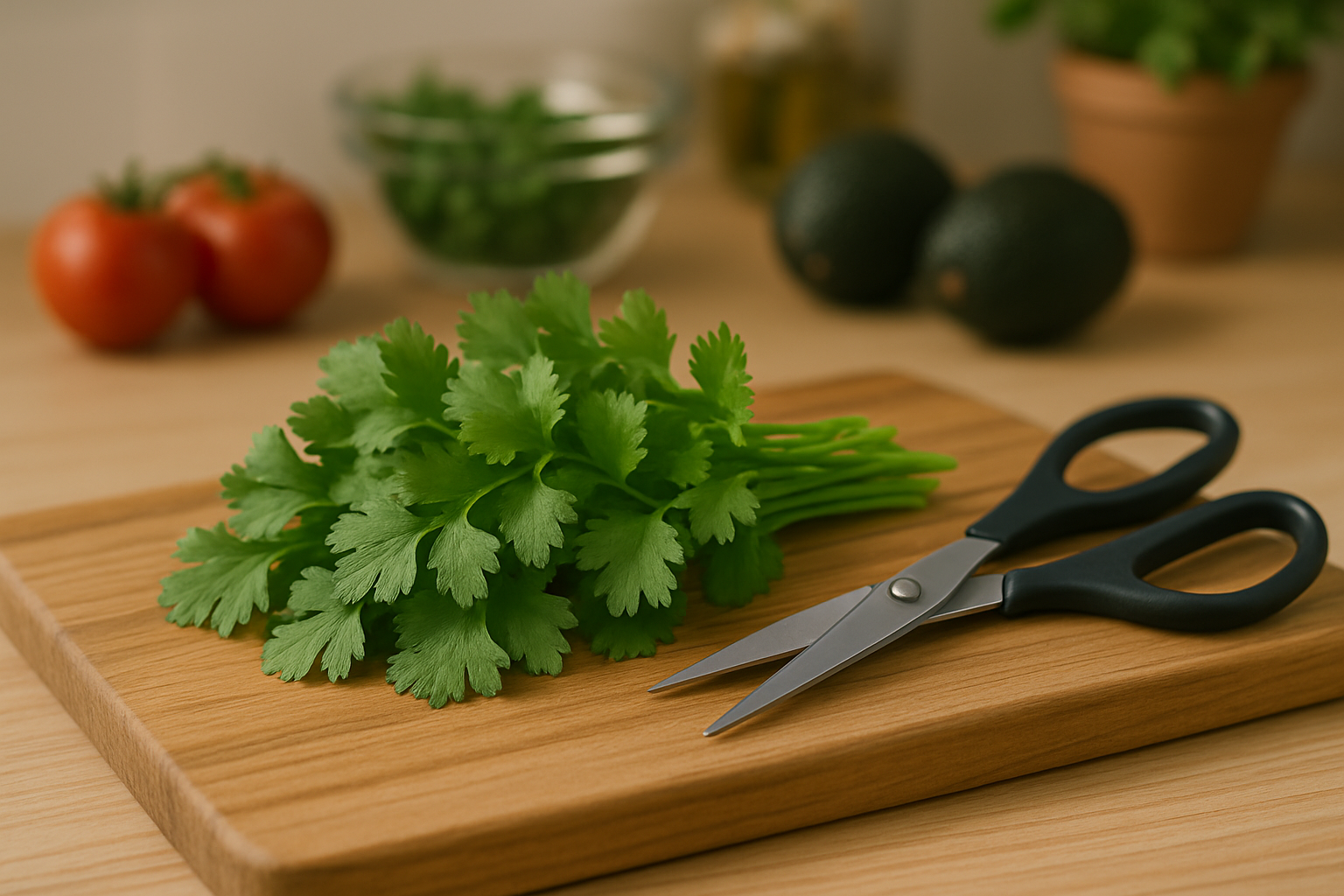
For the freshest and most flavorful cilantro, harvest your hydroponic plants once they’ve reached 4-6 inches tall—usually about 3-4 weeks after seeding. Use clean, sharp scissors to snip the outer leaves first, leaving at least two-thirds of the plant intact to encourage continuous regrowth.
Aim to cut just above a leaf node (where a pair of leaves split off) to stimulate new shoots. This “cut and come again” method lets you harvest every week or two without harming your plant’s productivity.
Try to pick in the early morning when the leaves are most aromatic, and avoid letting cilantro bolt (flower) by keeping your grow area cool.
Freshly harvested hydroponic cilantro is a powerhouse in the kitchen. You can:
- Toss it into salads
- Sprinkle over tacos
- Blend into zesty salsas
- Stir into homemade guacamole at the last minute for a burst of bright, herbal flavor
- Add as a garnish to soups, curries, or noodle dishes right before serving
Quick harvests mean you always have a fresh supply on hand, and using it fresh preserves its unique fragrance and taste. Rotate your cilantro harvests every few days for a steady supply and happy, thriving plants.
Common Questions and Problems
Cilantro fans often wonder why their plants look tall and spindly—this “legginess” usually happens when they don’t get enough light. If you’re growing hydroponic cilantro indoors, use a grow light positioned 6–12 inches above the plants and keep it on for 12–16 hours a day.
Another frequent question is whether you can regrow cilantro from cuttings. Cilantro rarely roots well from cuttings; it’s best grown from seed, which germinates quickly in a hydroponic setup.
Yellowing leaves often mean nutrient imbalances—check that your nutrient solution has enough nitrogen but isn’t too concentrated, and change out your water every two weeks to prevent salt buildup. Poor growth or weak flavors can also stem from water that’s too warm (over 75°F); cilantro prefers cooler hydroponic systems.
If you notice drooping, check for clogged air stones or poor water circulation, as cilantro roots need oxygen. Troubleshooting issues early keeps plants healthy and productive.
If you run into recurring difficulties, the Hydroponic Society of America and online gardening forums like Reddit’s r/hydroponics offer tips and support from experienced growers ready to help troubleshoot specific problems.
